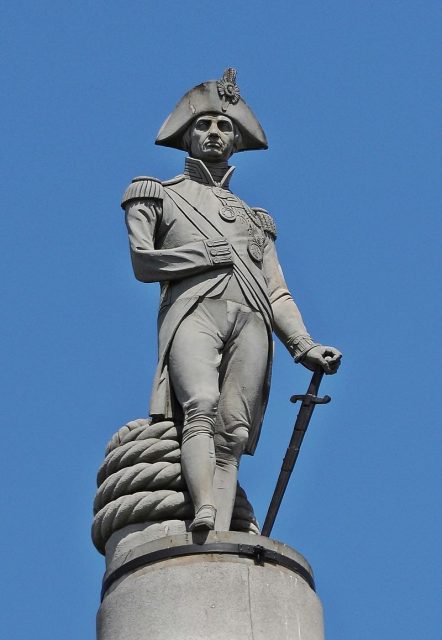Could the National Maritime Museum give Lord Nelson’s legacy the heave ho? That’s the dramatic spin being placed on news emerging in the run up to Trafalgar Day.
The Telegraph has obtained documents under a Freedom of Information request, showing the Greenwich location plans a shake up of classic content. Referring to the report, South London Press writes the organization is “seeking to communicate the ‘often barbaric history of race, colonialism and representation in British maritime history.’”

This slight shift in direction puts the Museum on a collision course with Nelson’s status as a hero, according to some outlets.
He famously led the Battle of Trafalgar against French and Spanish forces in 1805. Nelson never lived to see his victory, dying from a bullet wound approx half an hour before hostilities concluded at the age of 47.
Inspired by June’s toppling of slave owner Edward Colston’s statue in Bristol, Royal Museums Greenwich director Paddy Rodgers wants to acknowledge growing unease about Britain’s past… seafaring or otherwise. Emphasis is being placed on slavery and those who either participated in or endorsed the trade.

Nelson certainly plays his role. Earlier in the year History Extra wrote about a letter the naval champion sent to Simon Taylor, friend and Jamaican slave owner.
Nelson declared he was part of “the good old school, and taught to appreciate the value of our West India possessions”. He went on to describe the “damnable and cursed doctrine of Wilberforce and his hypocritical allies.”
William Wilberforce campaigned to abolish slavery, with the British cause won in 1807. History Extra mentions Nelson’s admission that he went overboard with his comments, to use a sailing term. Even so, his words were heartfelt.
It also states how Nelson’s victory at Trafalgar inadvertently helped abolitionism by asserting British control. With their enemies vanquished, Parliament apparently became receptive to new ideas!
What does the Museum have in store for the wave-ruling figure? Nothing, says Rodgers. It’s far from set in stone however. Will any changes be made in due course? Quoted by South London Press, Rodgers states they “inevitably will do so in the future”.
Nelson’s contemporaries are very much part of the plan. Admiral Edward Pellew’s statue is to be re-labelled, mentioning how he “helped protect the slave trade”, according to the Mail. Pellew fought in the Napoleonic Wars, among others. The display of Admiral Lord James de Saumarez joins him in receiving added context.

Trafalgar’s 215th anniversary is marked on Wednesday aboard HMS Victory, Nelson’s flagship. The Royal Navy website writes it is “a battle which defined the Age of Sail and which sealed British dominion of the seas for a hundred years.”
The Mail is keen to point out how the Navy “became a police force” against slavery post-abolition, as the “Preventative Squadron”.
Black Lives Matter and other groups have highlighted the need for fresh perspectives on history, calls heeded by various institutions in recent months. Heated debates over how far measures can be taken are ongoing. Nelson’s Column was erected in 1843. Some voices are calling for the iconic landmark to be scrapped.

Controversy surrounds infamous South African mining magnate Cecil Rhodes and his statue at Oriel College, Oxford. The Oxford Mail reports on a suggested solution whereby Rhodes stays up… and Nelson Mandela placed next to him! “Retain and explain” is a possible strategy being discussed, both locally and nationally.
Quoted regarding the general situation, Lord Woolley of Woodford says, “we understand that no one is perfect and this is not an attempt to rewrite history, rather to better understand it.”
The National Maritime Museum brands recent coverage as misleading. It’s reported by South London Press that they responded to The Telegraph, but their comments weren’t published. The Mail clarifies further, quoting there are “no plans to remove any statues or busts, although our displays are constantly changing.”
Another Article From Us: Lady Diagnosed With Medieval ‘Holy Fire’ Disease After Experiencing Burning Pains in her Legs
Lord Nelson certainly hasn’t been sunk over on the Royal Museums Greenwich website. It talks about the sights visitors might see on a visit to the ‘Nelson, Navy, Nation’ permanent gallery, including “Nelson’s iconic uniform” and “weird and wonderful Nelson memorabilia”. The display “considers the legendary national hero in the context of his day.”
A lot more consideration might be on the horizon, if reports are to be believed…!
